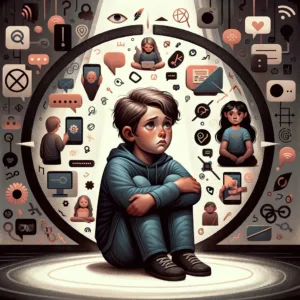Child development is a complex process influenced by multiple factors, from the family environment to education and social interaction. At the heart of this development lies self-esteem, a fundamental pillar that shapes a child’s personality, academic and social success, and general well-being. New technologies play a significant role in this process, offering unique opportunities as well as presenting specific challenges.

The role of self-esteem in a child’s development
The role of self-esteem in a child’s development is crucial to the child’s overall development. This personal perception of one’s own worth is not innate; it builds and evolves over time, shaped by a multitude of daily experiences and interactions. The primary builders of a child’s self-esteem are often parents and relatives, whose encouragement, acceptance and support help lay the foundations for a positive self-image. Teachers and classmates also play a significant role, with their feedback and interactions profoundly influencing how the child perceives him/herself.
Successes and failures are an integral part of this building process. Successes, however minor, boost self-confidence and motivation, while failures, approached constructively, teach perseverance and the ability to bounce back. It’s essential that children learn to see challenges not as insurmountable obstacles, but as opportunities for learning and personal growth. It is in this light that self-esteem flourishes, enabling children to develop resilience in the face of life’s adversities.
The impact of new technologies
New technologies, particularly social media and online games, have a considerable impact on the self-esteem of children and teenagers. This digital omnipresence brings its share of opportunities and challenges, particularly in terms of child development and, more specifically, self-esteem.
Challenges
Social comparison and body image: Constant exposure to idealized images and stories on social media can lead to negative comparisons, affecting children’s body image and self-esteem. The pressure to conform to unrealistic standards of perfection can be particularly damaging during the formative years.
Cyberbullying and exclusion: Children are also likely to experience negative online behavior, such as cyberbullying , which can have a profound impact on their emotional well-being and self-esteem. The anonymity of Inter net can sometimes encourage cruel or intimidating behavior.
Information overload and distraction: Constant access to information and distractions can prevent children from developing sustained concentration, an essential skill for success at school and in life. This can lead to frustration and feelings of inferiority when tasks are not completed.
 Opportunities
Opportunities
Self-expression and creativity: Social media and certain online platforms offer children a space to express themselves, share their interests, and explore their identity. This can help boost their self-confidence when they receive positive feedback from their peers and community. Find out more.
Learning and skills development: Many online games and educational applications encourage the development of important skills, such as problem-solving, critical thinking and collaboration. Successful completion of tasks or challenges in these environments can boost self-esteem by showing children that they are capable of achieving goals and overcoming obstacles (Article will be available in the coming weeks!).
Socialization and belonging: Digital technologies enable children to connect with friends and discover communities with similar interests. These connections can reinforce a sense of belonging and social acceptance, key elements for healthy self-esteem.
Strategies for parents
To maximize the benefits while minimizing the risks of technology on children’s self-esteem, several strategies can be adopted:
- Media education: Teach children to use technology critically and consciously, and to distinguish between beneficial and harmful content (Article will be available in the coming weeks!).
- Healthy limits: Set limits on technology use to encourage a variety of activities, including family time, physical activities and time outdoors.
- Open dialogue: Create a space for open discussion of online experiences, concerns and challenges, encouraging a proactive approach to potential problems.
- Building self-esteem offline: Encourage activities that build children’s self-esteem, such as sports, the arts and volunteering, enabling them to value themselves beyond the digital world.


